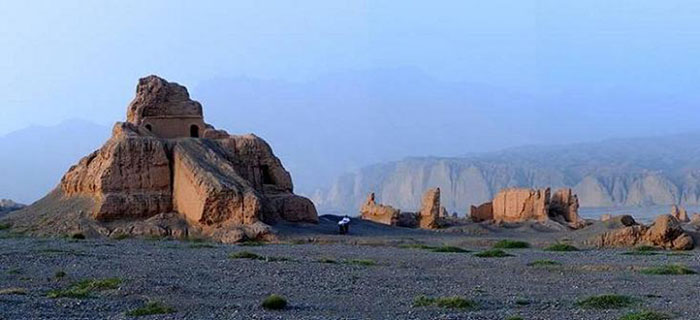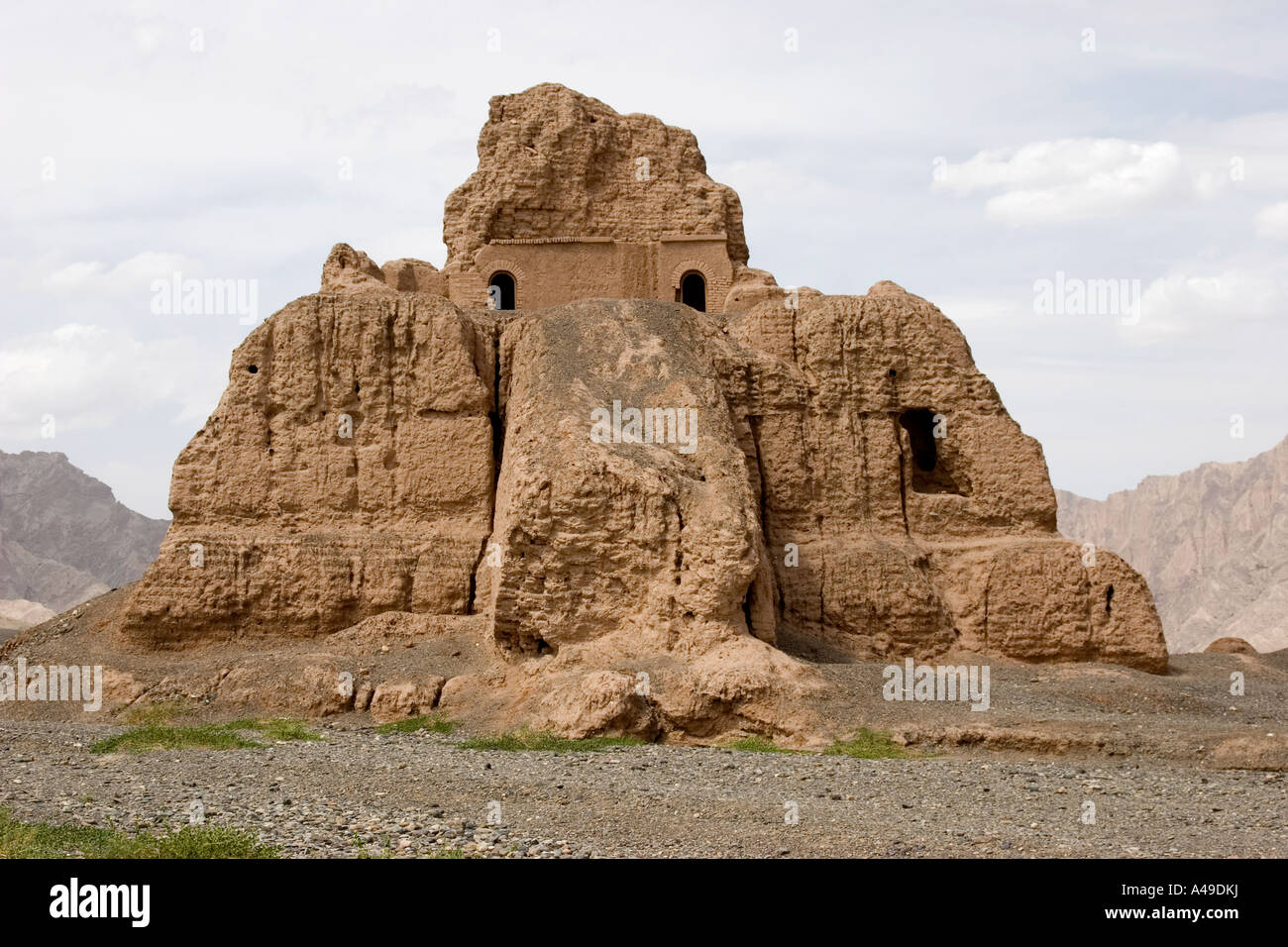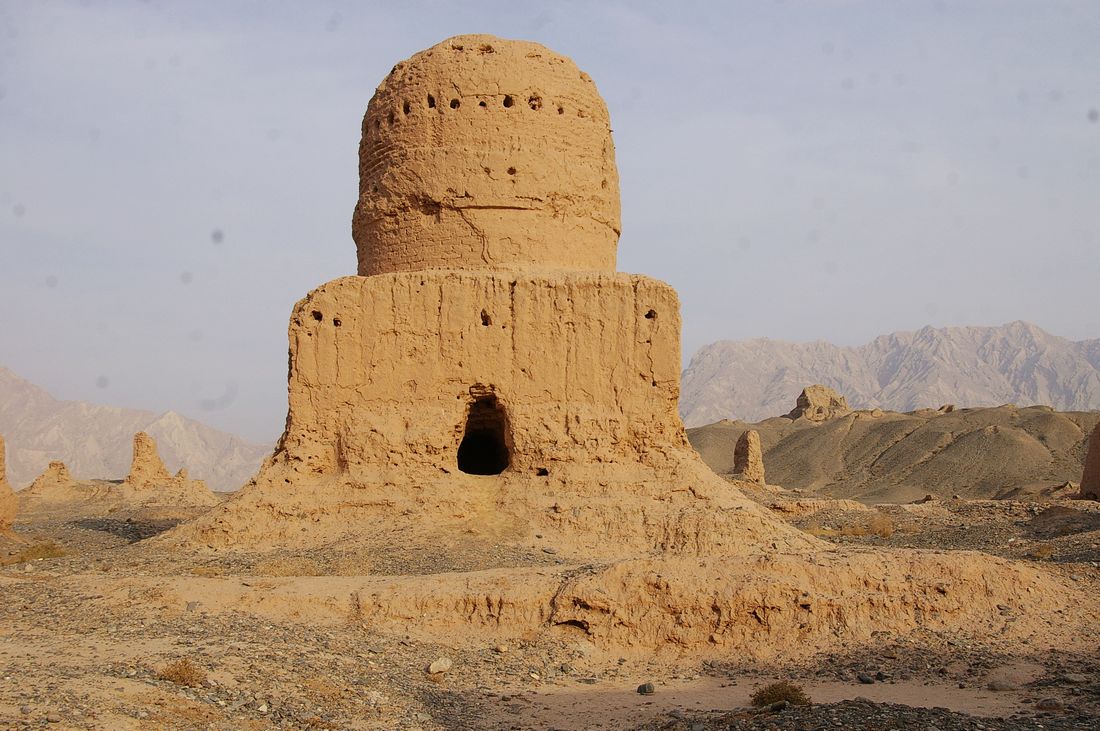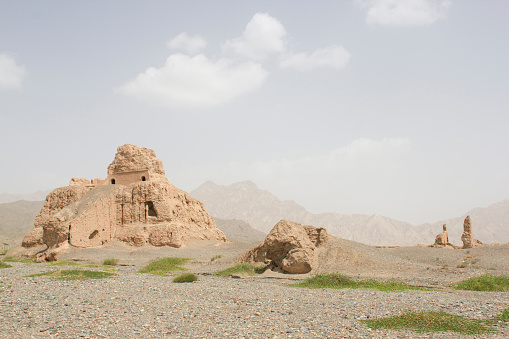Subashi Ruins: A Hidden Gem for History Buffs and Adventure Seekers

An Essential Guide to Visiting Subashi Ruins
Nestled in the quiet outskirts of Kuqa County, the Subashi Ruins (苏巴什佛寺遗址) beckon adventurous travelers with a promise of ancient stories and breathtaking landscapes. Once a thriving hub along the legendary Silk Road, this archaeological site is a testament to the region’s rich cultural tapestry, where the echoes of history resonate amid the remnants of a bygone civilization. As you wander through the weathered stones and remnants of temples, you’ll find yourself transported back in time, imagining the vibrant community that once flourished here.
The Subashi Ruins offer not just a glimpse into the past, but also an opportunity to connect with the very essence of the Silk Road—a corridor that once linked East and West, facilitating the exchange of goods, ideas, and cultures. While the site may not be as extravagant as other historical landmarks, its understated charm lies in its authenticity and the tranquility of its surroundings. Visitors often describe the experience as both enlightening and serene, with the majestic backdrop of Beishan Mountain enhancing the allure of this ancient site.
Whether you’re a history buff, a nature lover, or simply seeking a unique off-the-beaten-path destination, Subashi Ruins promise an enriching journey. Prepare to be captivated by the stories etched into the weathered walls and the serene beauty that envelops this historical gem. Join us as we delve into the essential details for planning your visit to this remarkable piece of history, where every step draws you deeper into the narrative of the Silk Road.
In This Guide
- An Essential Guide to Visiting Subashi Ruins
- The Rich History and Legends of Subashi Ruins
- Main Highlights: What You Absolutely Can’t Miss
- Planning Your Visit: A Practical Guide
- Tickets: Prices, Booking, and Tips
- How to Get There: A Complete Transportation Guide
- Local Cuisine and Accommodation Nearby
- Frequently Asked Questions
- Final Thoughts on Your Trip
The Rich History and Legends of Subashi Ruins
Nestled in the scenic landscapes of Kuqa County, the Subashi Ruins, or Subashi Gucheng Temple, stand as a remarkable testament to the rich tapestry of history woven along the ancient Silk Road. This site, believed to date back over 1,700 years, once served as a bustling hub for trade and cultural exchange, connecting East and West in a vibrant fusion of ideas, art, and commerce.
The Subashi Ruins were part of an ancient city that flourished during the Tang Dynasty, a period marked by unprecedented cultural and economic prosperity. This thriving settlement was strategically located between two rivers, allowing it to become a key stop for caravans traversing the treacherous desert routes. Merchants, pilgrims, and travelers would gather here, exchanging goods such as silk, spices, and precious stones while also sharing stories and legends that would shape the cultural landscape of the region.
Interestingly, the site is often associated with the legends of a “women’s kingdom,” a narrative that adds a layer of intrigue to its history. Scholars and historians suggest that this unique aspect may have stemmed from the prominent role women played in the local economy and society, further enriching the city’s diverse heritage. The remnants of ancient houses, stupas, and temples that still stand today, albeit weathered by time, serve as silent witnesses to this vibrant past.
Visiting the Subashi Ruins is like stepping back in time. As you wander through the expansive area, you’ll find that the site is not overly commercialized, allowing for an authentic experience steeped in history. The surrounding scenery, characterized by majestic mountains and arid landscapes, enhances the feeling of isolation that once enveloped this significant Silk Road oasis.
While the site may not boast extravagant attractions, it offers an intimate glimpse into the life of a city that played a crucial role in the development of Buddhism in the region. Many travelers recommend engaging a local guide to fully appreciate the intricate stories behind the ruins and to understand the significance of what remains. A knowledgeable guide can bring the site’s history to life, providing context for the impressive structures that dot the landscape.
The Subashi Ruins are not only a historical site but also a place for reflection and meditation, set against the serene backdrop of the Beishan Mountains. As you explore, you may find a sense of calm wash over you, a feeling that is echoed in the experiences of those who have ventured here before. Travelers often remark on the peaceful atmosphere, making it an ideal spot to pause and contemplate the vast history that has unfolded within these walls.
In essence, the Subashi Ruins are a fascinating chapter in the grand narrative of the Silk Road, inviting international travelers to delve into the rich history and legends that define this ancient site. Whether you’re a history enthusiast or simply seeking a unique experience off the beaten path, the Subashi Ruins promise an unforgettable journey through time.

Subashi Ruins.
Main Highlights: What You Absolutely Can’t Miss
When exploring the Subashi Ruins, an archaeological gem nestled in Kuqa County, Xinjiang, visitors are treated to a captivating journey through history, culture, and stunning landscapes. Here’s a guide to the main highlights that you absolutely can’t miss during your visit to this fascinating site.
1. Stupas and Ancient Structures
At the heart of the Subashi Ruins lies a variety of ancient structures, including well-preserved stupas that evoke the spirituality of the past. These monumental edifices stand as a testament to the architectural prowess of the era, offering a glimpse into the religious practices and beliefs of the communities that once thrived here. As you wander among the ruins, take a moment to appreciate the intricate designs and the stories they tell about the Silk Road’s cultural exchanges.
2. Breathtaking Scenery
The backdrop of the ruins is as impressive as the structures themselves. Set against the majestic Beishan Mountain, the stark beauty of the landscape enhances the experience, providing a serene atmosphere for exploration and reflection. Don’t forget to bring your camera; the interplay of ancient stone and rugged mountains creates a stunning tableau that’s perfect for capturing the essence of this historic site.
3. Historical Significance
Recognized as a UNESCO World Heritage Site, the Subashi Ruins are steeped in history, dating back over 1,700 years. This ancient city was once a bustling hub along the Silk Road, serving as a meeting point for traders and travelers from diverse cultures. To fully appreciate the significance of the site, consider hiring a local guide who can provide valuable insights and stories about the ruins and their role in the rich tapestry of Silk Road history.
4. The Tranquility of the Site
One of the most appealing aspects of the Subashi Ruins is the sense of tranquility that envelops the area. Visitors often find themselves alone or in small groups, allowing for a peaceful exploration away from the crowds. This quietude not only enhances the experience but also provides a perfect setting for meditation or contemplation, making it an ideal spot to unwind and connect with the surroundings.
5. The Nearby Museum
While at the ruins, take the time to visit the small museum located just adjacent to the site. Although it may not be extensive, the museum offers valuable context through photographs and explanations of the site’s historical background. It serves as a great primer before you start your exploration, helping to enrich your understanding of the significance of what you will see.
6. Cultural Experience
Engaging with local history at Subashi Ruins allows you to connect with the rich cultural heritage of the region. The site reflects the Buddhist influences in Xinjiang’s history and serves as a reminder of the diverse communities that have called this area home. Take the time to immerse yourself in the stories of the past, and consider participating in any local events or activities that may be taking place during your visit.
7. Accessibility and Visitor Experience
The Subashi Ruins are conveniently located near Kuqa County, making them easily accessible for day trips. The site is well organized for visitors, with boardwalk pathways that allow for comfortable exploration of the ruins while protecting the delicate structures from further wear. Be sure to wear comfortable shoes and stay hydrated as you navigate through this enchanting historical landscape.
In summary, a visit to the Subashi Ruins offers a unique blend of history, culture, and breathtaking natural beauty. Whether you are an avid history buff or simply seeking a tranquil escape, this site promises an enriching experience that captures the essence of the Silk Road’s storied past. Don’t miss the opportunity to step back in time and explore one of China’s hidden treasures.

Subashi Ruins.
Planning Your Visit: A Practical Guide
When planning your visit to the Subashi Ruins (苏巴什佛寺遗址), located in the heart of Kuqa County, Xinjiang, you’ll embark on a journey steeped in history and culture. This ancient site, part of the storied Silk Road, offers a glimpse into a bygone era and a chance to explore a fascinating piece of Chinese heritage. Here are essential tips to ensure a rewarding experience.
Getting There
Location:
The Subashi Ruins are situated about 20 kilometers from Kuqa, nestled in the Beishan Mountain area.
Transportation:
– By Taxi: The simplest way to reach the site is by taxi, which should cost around 100 RMB for a round trip. Ensure you agree on the fare beforehand or use a ride-hailing app if available.
– By Tour: Consider joining a guided tour for a more in-depth exploration of the area and its history. This can also provide transportation as part of the package.
Best Time to Visit
The ruins are open 24 hours a day, but visiting in the afternoon is advisable to avoid the harsh midday sun. Spring (April to June) and autumn (September to October) are the ideal seasons for comfortable temperatures and clearer skies.
What to Expect
Historical Significance:
As you wander through the ruins, you’ll encounter remnants of ancient structures that once served as a thriving center on the Silk Road. The site is well-organized, allowing you to appreciate the historical context, though it is recommended to visit with a guide for richer narratives and insights.
Scenic Beauty:
The ruins are set against a stunning backdrop of mountains, enhancing the atmospheric experience. Bring your camera to capture the stark beauty of the landscape, which adds to the allure of the historical site.
Tips for Your Visit
- Stay Hydrated: Bring sufficient water, especially during warmer months, as there are limited facilities at the site.
- Wear Comfortable Shoes: The terrain can be uneven, so comfortable walking shoes are a must.
- Sun Protection: Don’t forget sunscreen and a hat to protect yourself from the sun, particularly if you’re visiting during the day.
- Photography: While you’re encouraged to take photos, be respectful of the site’s historical significance and any restrictions that may be in place.
Additional Attractions Nearby
After exploring the Subashi Ruins, consider visiting other nearby attractions to enrich your travel experience:
– Kuche Temple: A historic site of religious significance located nearby.
– Kezi’er Ga Ha Thousand-Buddha Cave: Another ancient site featuring intricate cave carvings and sculptures.
– Junzi Ecological Park: A perfect place for a leisurely stroll amid nature after your historical adventures.
Cultural Etiquette
As a visitor, it’s important to respect local customs and practices. Engage with local guides and residents with kindness and curiosity, and be mindful of any specific cultural norms, particularly in this relatively remote part of China.
Conclusion
Visiting the Subashi Ruins is not just a trip into the past; it’s an opportunity to connect with the rich tapestry of Chinese history and the stories of the Silk Road. By planning ahead and embracing the experience, you’ll leave with lasting memories and a deeper appreciation for this remarkable site. Happy travels!

Subashi Ruins.
Tickets: Prices, Booking, and Tips
When planning your visit to the Subashi Ruins, also known as the Subashi Gucheng Temple, it’s essential to have all the relevant ticket information at your fingertips.
Ticket Information
Visiting the Subashi Ruins is quite accessible, with tickets priced at approximately 100 RMB (around 15 USD). This price allows you to explore this significant historical site, which is part of China’s rich Silk Road heritage. Given the site’s cultural importance and its designation as a UNESCO World Heritage site, this fee is quite reasonable.
Booking Tips
-
On-Site Purchase: Tickets can be purchased directly at the site. There is no need for advance reservations, making it convenient for spontaneous travelers.
-
Guided Tours: While you can explore the ruins at your own pace, consider booking a guided tour. Many visitors recommend having a knowledgeable guide to enrich your experience with historical context and insights, which can greatly enhance your understanding of this ancient city.
-
Best Time to Visit: The Subashi Ruins are open 24 hours a day, but visiting during the early morning or late afternoon can help you avoid the midday heat, especially in the summer months.
-
What to Bring: Since the area can be quite arid and sunny, remember to carry water, sunscreen, and a hat. Comfortable walking shoes are also recommended, as you’ll want to explore the expansive site.
Accessibility
The ruins are located approximately 20 kilometers from Kuqa, and a taxi ride from the town typically costs around 100 RMB. This makes getting to the site relatively easy for international travelers, ensuring that you can immerse yourself in the tranquility and history of this remarkable location.
By being well-prepared, your visit to the Subashi Ruins can be a memorable experience, allowing you to appreciate the profound history and beauty of the Silk Road. Enjoy your journey into China’s rich past!
How to Get There: A Complete Transportation Guide
To reach the mesmerizing Subashi Ruins, nestled in the heart of Xinjiang’s Kuqa County, you have several transportation options that cater to both comfort and budget. Here’s a comprehensive guide to ensure your journey is as smooth as the silk you’ll learn about at this ancient site.
By Air
Flying into Kuqa: The nearest airport is Kuqa Airport (KCA), which is approximately 20 kilometers from the Subashi Ruins. Depending on your starting point, you may need to connect through larger cities like Urumqi, the capital of Xinjiang, which has more frequent domestic flights.
Airport Transfer: Upon arrival at Kuqa Airport, you can take a taxi directly to the Subashi Ruins. The ride will take about 30 minutes and typically costs around 100 RMB. Ensure you have your destination written in Chinese to show your driver, as English may not be widely spoken.
By Train
Train Travel: If you prefer a scenic overland journey, consider taking a train to Kuqa from Urumqi or other main cities in Xinjiang. The train journey provides a unique glimpse into the vast landscapes of the region.
From the Train Station: Upon arriving at the Kuqa Railway Station, taxis are readily available. A taxi ride from the station to the ruins will take approximately 40 minutes and cost about 80 RMB.
By Bus
Long-Distance Buses: Buses from Urumqi to Kuqa operate regularly throughout the day. The journey takes around 8 to 10 hours, depending on traffic and road conditions. This option is more economical and allows you to mingle with locals.
Local Transportation: Once in Kuqa, you can catch a local taxi or a rideshare to the Subashi Ruins. Expect a 30-minute ride costing around 100 RMB.
By Car
Self-Driving: For those who enjoy the freedom of driving, renting a car in Urumqi can be a great option. The journey to the ruins is about 700 kilometers and will take approximately 8 hours. The route is well-marked, but be prepared for varying road conditions, especially in rural areas.
Parking: There is parking available near the ruins, making it convenient for those who choose to drive.
Guided Tours
Opting for a Tour: If you prefer a hassle-free experience, consider booking a guided tour that includes transportation. Many local operators provide full-day excursions from Urumqi, which typically encompass visits to other nearby attractions along with the Subashi Ruins. This can enhance your understanding of the area’s rich history and culture.
Final Tips
- Check Schedules: Always check the latest transportation schedules and availability, as they can fluctuate based on the season and demand.
- Travel Essentials: Carry sufficient water and snacks, especially if you’re taking longer forms of transport, as amenities may be limited en route.
- Plan for Weather: The region can have extreme weather conditions; dress accordingly and ensure your vehicle is prepared for any conditions.
With this transportation guide, you’re well-equipped to embark on your journey to the Subashi Ruins, where the echoes of the Silk Road await your exploration. Safe travels!

Subashi Ruins.
Local Cuisine and Accommodation Nearby
When visiting the Subashi Ruins, you’ll find yourself immersed not just in history but also in the flavors and comforts of local Kuqa County. This quaint region in Xinjiang boasts a culinary scene that reflects its rich cultural tapestry, influenced by the various ethnic groups that have called it home.
Local Cuisine
1. Kuqa Noodle House
This charming eatery is famous for its hand-pulled noodles, a staple in the local diet. The chefs skillfully prepare a variety of dishes, including spicy lamb noodles and stir-fried vegetables. Don’t miss the chance to try the Lamb Skewers, seasoned with aromatic spices and grilled to perfection, making it a favorite among both locals and travelers.
2. Uyghur Restaurant
Experience the culinary delights of the Uyghur culture at one of the many local restaurants. Here, you can savor traditional dishes such as Dapanji (big plate chicken) served with flatbread, or Polo, a fragrant rice dish with carrots and succulent pieces of lamb. Pair your meal with a refreshing glass of Pomegranate Juice or the local favorite, Chai (tea).
3. Local Market Stalls
For a more casual dining experience, explore the local markets where you can find quick bites like Samsa (savory pastries filled with meat) and Xinjiang-style dumplings. These stalls offer a great way to sample authentic local flavors on the go.
Accommodation Nearby
1. Kuqa Hotel
Located just a short drive from the ruins, the Kuqa Hotel combines modern amenities with traditional charm. Guests appreciate the spacious rooms, on-site dining options, and friendly staff who can help arrange guided tours to the Subashi Ruins and other nearby attractions.
2. Silk Road Grand Hotel
A little further into the heart of Kuqa, this hotel offers comfortable accommodations with a touch of luxury. Enjoy their spacious suites and a rooftop restaurant that offers stunning views of the surrounding mountains. It’s an ideal place to relax after a day of exploration.
3. Guesthouses and Homestays
For a more intimate experience, consider staying in one of the local guesthouses or homestays. These accommodations provide a unique opportunity to connect with local families and immerse yourself in the culture. Many hosts offer home-cooked meals, giving you a taste of authentic local cuisine right from the kitchen.
Conclusion
Exploring the Subashi Ruins is not just about the historical significance; it’s also an opportunity to indulge in the delicious local cuisine and enjoy cozy accommodations that reflect the spirit of Kuqa County. Whether you’re dining at a local restaurant or resting in a welcoming guesthouse, your experience in this enchanting region will be one to remember.

Subashi Ruins.
Frequently Asked Questions
Frequently Asked Questions about Subashi Ruins
-
What are the Subashi Ruins?
The Subashi Ruins, also known as Subashi Gucheng Temple, are the remnants of an ancient city located in Kuqa County, Xinjiang, China. This site was once a significant stop along the Silk Road, showcasing the rich history and cultural exchange that took place in this region. -
How do I get to the Subashi Ruins?
The Subashi Ruins are approximately 20 kilometers from Kuqa County. The best way to reach the site is by taxi, which typically costs around 100 RMB. Alternatively, you can arrange for a guided tour that includes transportation. -
What are the opening hours?
The Subashi Ruins are open 24 hours a day, allowing visitors to explore the site at their convenience. However, visiting during daylight hours is recommended for better visibility and a more enjoyable experience. -
Is it necessary to hire a guide for the visit?
While it is not mandatory to hire a guide, it is highly recommended. A knowledgeable guide can provide valuable insights and historical context, enhancing your understanding of the ruins and their significance on the Silk Road. -
What should I wear when visiting?
Dress comfortably and wear sturdy shoes, as the site involves walking on uneven terrain. If visiting during the warmer months, bring sun protection, such as hats and sunscreen, as the area can get quite hot. -
Are there any facilities available on-site?
There are limited facilities at the Subashi Ruins. It’s advisable to bring your own water and snacks, as well as to prepare for basic needs. There is a small museum nearby, although it mostly features photographs with minimal artifacts. -
What should I expect in terms of crowds?
The Subashi Ruins are not overly crowded, making it a peaceful destination for exploration. Many visitors report having the site mostly to themselves, allowing for a more reflective experience amidst the historical backdrop. -
Can I take photographs at the site?
Yes, photography is allowed at the Subashi Ruins. The stunning landscapes and ancient structures provide excellent opportunities for capturing memorable moments. Just be respectful of the site and its cultural significance while taking photos.
Final Thoughts on Your Trip
As your journey through the enchanting landscapes of Kuqa County comes to a close, the Subashi Ruins stand as a poignant reminder of the rich tapestry of history that once thrived along the Silk Road. This ancient site, though not as opulent as some of its counterparts, offers a serene and reflective space where the stories of traders, travelers, and cultures intertwine.
Walking among the remnants of the past, you can almost hear the whispers of history echoing off the stone walls. The views are nothing short of breathtaking, with the rugged mountains serving as a majestic backdrop to the ruins. Whether you choose to explore on your own or enlist the expertise of a local guide, the experience is sure to ignite your imagination and deepen your appreciation for the cultural heritage that shaped this region.
So, as you savor the memory of this hidden gem, let the tranquility of the Subashi Ruins inspire you to seek out more stories in the places you visit. Each ancient stone is a testament to the passage of time and the enduring spirit of human connection. Embrace the adventure and let the echoes of history guide your travels ahead.